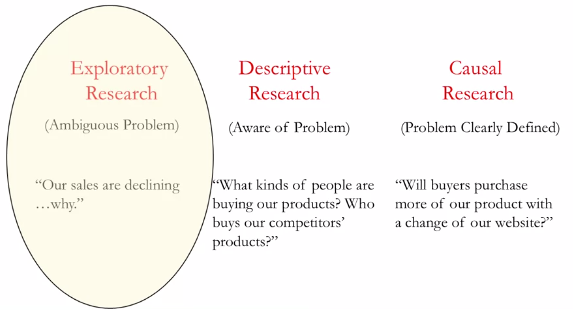What is Descriptive Analytics?

These days, a lot of collection and analysis of big data is outsourced to third party companies who specialized these things. It is very important to know about these companies. The way in which they're collecting this data, and the kinds of the questions that the data is trying to explore.
Examples of data that are used for analytics include scanner data at grocery stores, or metric for measuring audience engagement by media companies. Apart from this, several other industries engage in descriptive data analytics.
Now, why is knowing about these companies important? By learning about these companies, you will take away actionable techniques in thinking and forming questions, about descriptive data, techniques that you can employ in whatever descriptive data environment you are attempting to analyze.
What is descriptive analytics?
- Descriptive analytics is a way of linking the market to the firm through decisions.
- It is the information that's needed to make actionable decisions.
- It is principles for systematically collecting and interpreting data that can aid decision makers.
Let us look at the synergy between data and decisions that managers have to make that makes for good analytics.
What are the kinds of decisions that managers might have to make?
Decisions related to answering exploratory questions
Example: Let us think about a brand manager, who is looking at their brand sales and the numbers suddenly start dropping. Question is why are they dropping?
- Is it because customer preferences have changed?
- Is it because customers like competitors?
- Etc. etc.
Decisions related to answering descriptive questions
Let us take the same example of the brand manager.
- What's their customer share of wallet?
- How much are they spending with the brand?
- How much are they spending with their competitors?
- Who are our customers?
- What's our segmentation like?
Decisions related to answering causal questions
- If I'm changing the landing page on my website, how will it change consumer behavior?
- Would it in increase it in terms of click through rate, or would it bring it down?
As we move from exploratory questions to causal questions, the type of data that needs to be collected, the type of conditions that the data needs to be collected under also keep changing.
Exploratory Research
Exploratory type of data collection is typically done to develop initial hunches or insights.
For example, the brand manager thinking about why the sales are dropping. It could be a variety of different reasons.
This type of data collection is a first step to get a broad understanding of what the underlying problems could be and it provides broad guidelines on what you should look for more rigorously.
One of the most common ways of exploratory data collections are focus groups.
- Rationale: talking about the brand, free-flowing conversation, in-depth probing, unstructured discussion, ability to observe dynamics
- Format: 8-10 individuals, 1 moderator who designs the overall flow, about 1 hour long, incentives for participants
- Common uses: Product concept, ad copy, survey design
These days focus groups have morphed to many different ways. One of them is market research online communities, or internet communities.
For example: VocalPoint (competitor - CSpace)
- VocalPoint brings about 100 to 200, or sometimes 500 people in a group.
- It monitors them over a period of six months to a year.
- The idea here is to build relationship with your consumers.
- Over time these 100 to 200 people, start building relationships with each other.
- They become more and more comfortable talking about their real feelings and real insights.
Advantages of internet communities:
- Enhanced engagement with customers à these customers are together, talking to each other, talking to the brand for about six months to a year. So this closed concentration in terms of talking to each other, communication with the brand really enhances their engagement.
- Shorter deadlines are possible à With focus group there are logistical issues in terms of trying to get these people in the room, get a moderator, etc. With internet communities, you are looking at these customers for about six months to a year, so you can actually have much shorter deadline.
- “aha” moments à The most famous example is Kraft's 100 calorie pack. Here is what they did. They basically had a community that had worked with CSpace. They started looking at what do people want in snacks? The key insight was that it is not that people wanted to stop eating snacks, what they really wanted was snacks with low calories. Nabisco's 100 calorie pack has been an amazing success.
Caveat:
ROI is very hard to determine à This is because as you start engaging with an internet community, early on it might be quite difficult to forecast, what kind of insights will come out.
